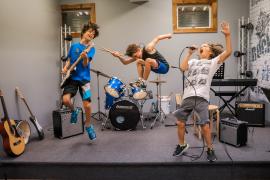When most people talk about, “bias” in wilderness risk management, they’re not using the word in the same way that many use it today.
In diversity, equity, and inclusion training, we come to understand that we have a series of biases that society has programmed into us. The training is meant to help us understand these biases in order to overcome them. Wilderness risk management training seldom takes this kind of bias into account.
But perhaps it should.
When bias is discussed in wilderness risk management, it is often explored from the perspective of decision-making. Heuristics are the processes by which we make decisions using mental shortcuts that are influenced by an individual’s unconscious — and sometimes conscious — biases. When these biases influence us to make a poor or potentially dangerous decision, this is referred to as a “heuristic trap.”
Though the military has spent decades trying to understand the psychology of decision-making in risky settings, it was only in 2004 that this topic was widely explored in outdoor recreation, initially occurring through the lens of avalanche education for backcountry skiers and snowboarders. Ian McCammon wrote a seminal article on the topic entitled “Heuristic Traps in Recreational Avalanche Accidents: Evidence and Implications.”
In the article, McCammon identified six heuristic traps that could impact winter backcountry recreationalists but also have profound implications for every other type of outdoor adventure recreation, including camp activities:
- Familiarity Bias — This is where we develop a deep level of comfort in a given area. We know the area well. We’ve frequently engaged in activity in the area. In the back of our minds, we believe that it’s unlikely that anything bad will happen there.
For backcountry skiers and snowboarders, this is the local slope that they visit all the time. For rock climbing instructors, it’s the crag that they use constantly. For boaters, it’s that stretch of river they’ve traveled a million times.
Intellectually, we all know that there’s still hazard in these places. However, our biases, built by our experiences in these areas, can make us complacent, leading to a heuristic trap. - Consistency Bias — Sometimes, after an initial decision has been made, it’s easier to stick with that decision than to make an error correction. This can be a huge problem when one has committed to something that requires a lot of work to change. For example, taking the wrong trail for miles and hoping it will work out.
The problem with consistency bias is that after we’ve made one decision, all other decisions in line with that first decision are easier, often getting us deeper and deeper into trouble. - Social Acceptance Bias — When we engage in activities that we think will get us noticed by those we like and respect, we are leaning into a social acceptance bias. The mountain biker might want to do a jump that’s too technical in order to be noticed by his friends. The climber might go a little too far without adequate protection. And a camper on a long group hike might pack a bit too light, leaving behind some safety equipment. In each case, the person may be doing this to be seen, liked, and accepted by their group.
The social acceptance bias can be compounded by romantic interest. An individual may do something dangerous to catch their crush’s attention, or at least to avoid embarrassment in front of them. - The Expert Halo — A group often has a formal or informal expert. In some cases the person earned this role as an expert, like an instructor or a guide; in other cases the person is just more assertive. Regardless, if a group perceives a person to be an expert, they may not speak up when something appears dangerous. They assume the expert understands the hazard and will mitigate it.
- Social Facilitation — Sometimes people engage in risky behavior that they wouldn’t otherwise engage in because there are people around them. When alone, one might not try to do something hazardous, but with others on site, a person might feel they have reinforcements. Psychologically, it’s always easier to take risks when others are present.
- Scarcity Bias — When a resource is scarce (i.e., powder for skiers, a small cliff with limited routes for climbers, limited first-come-first-serve access, or even trailhead parking), people may engage in risky behavior to be “first.” In some cases, basic safety protocols are not addressed because the group is in a race to get somewhere before others.
Additional Heuristic Traps
Though there are dozens of other potential traps, a few stand out above the rest and should be added to McCammon’s list. At some level these are variations of the original six, but with enough nuance that they need to be addressed separately.
- Nonevent Feedback Loops — The familiarity bias is based on familiarity with an area. A nonevent feedback loop is a variation on this. Sometimes people say that they’ve always done something a certain way, and since there’s never been a problem, they believe that the way they’re doing it is safe.
Imagine a person who belays poorly, but the climber they’re belaying has never fallen. That person could believe that everything is fine with the way they’re belaying because they’ve never been tested.
Indeed, some people are even belligerent about sticking to their styles and techniques and will push back on instruction or feedback. This behavior is more prevalent in men and people in leadership positions (more on this to come). - Dunning-Kruger Effect — When an individual has a little bit of knowledge about something, occasionally they believe that they are an expert. This is particularly true when the individual is the only person who has had some training in a specific type of adventure outdoor recreation. Imagine the climbing wall practitioner taking his friends, who’ve never climbed, climbing a real cliff for the first time. Imagine the day hiker leading a backpacking trip.
The Dunning-Kruger effect can easily be combined with an unearned expert halo, creating a heuristic trap that could impact a group as negatively as a land mine. - Back-to-the-Barn Syndrome — This is the idea that risk rises as your activity comes to an end. This could be the last day of a multiday activity or the last rappel off a rock climb. Regardless of what it is, the danger is that we start to rush in order to finish, and the desire to be done increases our risk.
Cultural Bias in Outdoor Adventure Risk and Camp Activity Management
Cultural biases are a combination of unconscious and conscious biases that we learn throughout our lives. These are biases that we’re intentionally and unintentionally taught through our upbringing, education, entertainment choices, media, and through the communities that we exist within. These are the biases that are more commonly explored in traditional diversity, equity, and inclusion training.
Though there has never been a definitive study, anecdotally strong evidence exists that cultural biases — especially unconscious ones — may enhance heuristic traps in outdoor recreation.
Following is an abbreviated list of potential cultural biases:
- Racial — Bias for or against a person due to their racial makeup or the color of their skin.
- Gender — Bias for or against a person due to their gender.
- Socioeconomic — Bias for or against a person due to their socioeconomic status, or perceived status.
- Ageism — Bias for or against a person due to their age.
- Weight — Bias for or against a person due to their weight or physical fitness.
- Disability — Bias against those who are differently abled. This bias may include mental health or addiction.
- Heteronormative — Bias for those who fit into heteronormative stereotypes and against LGBTQ+ people.
- Religious or Political — Bias for or against a person due to their religion and/or politics.
Each of these may be viewed on a spectrum. For example, one might have a deeper racial bias against a person of color with darker skin than a person of color with lighter skin. Or someone might be more comfortable with a lesbian than a gay man.
Regardless, there’s also occasional intersectionality between these biases. In other words, a person might exhibit more than one trait generating either a positive or a negative bias within others.
So that brings us back to heuristic traps and cultural bias. Imagine a situation where a group of skiers is trying to decide whether or not to ski a slope given the potential avalanche hazard in the area.
One common refrain in the backcountry ski world (which would also work for camp counselors or activity leaders) is, “Everyone has a veto.” In other words, if someone feels uncomfortable, they can call off the trip and the group will turn around, regardless of what others think. But if there are unknown cultural biases stacked on top of classic wilderness risk management biases, it may make the decision to turn back much harder.
Imagine a group that includes six men and one woman. Without knowing anything else about the group dynamics or their interpersonal relationships, how likely is it that all of the men will immediately respect a veto if it comes from the woman, if she feels uneasy in the setting? What if it’s an LGBTQ+ person? A young person? A person who struggles with their fitness? And what if the person falls into more than one category? In addition to that, we have to ask, “Would one of these people even speak up given the cultural dynamics of their identity?”
Though every classic wilderness bias listed here has some cultural bias within it, the social acceptance bias, the expert halo, and the Dunning-Kruger effect are much more deeply affected by cultural bias than the others.
Those who have a perceived lower cultural status may seek group acceptance by making risky decisions or tolerating a higher level of risk than they would normally be comfortable with. Conversely, a well-intentioned person may push an individual to do something dangerous to help that person change their perceived status in the group.
It is no secret that our culture has an unconscious (and sometimes conscious) bias toward older, White, cisgender, heterosexual males. This allows them to fall into both the expert halo realm, where others perceive that they have a higher skill level than others — whether earned or not — as well as into the Dunning-Kruger realm, where they think that they have a higher skill level than they actually do.
So What Can We Do About This?
Some evidence shows that affinity programs (programs specifically for women, BIPOC, LGBTQ+, etc.) decrease learned cultural biases in a group. And indeed, sometimes people who are more alike in outdoor adventure recreation find more meaning in the activity than they do in a mixed group. Certainly some people feel safer speaking up about a potential hazard in affinity groups.
It is important to note, though, that affinity does not completely eliminate cultural bias as a potential heuristic trap. Many people are intersectional and live in multiple spaces where there is bias. Affinity can’t erase all of these potential cultural biases.
Smaller groups, in which people know one another well, are always better at making decisions in outdoor adventure recreation. The longer people know one another, and the more they recreate together, the less likely they are to lean on cultural bias when making risk-management decisions.
When it comes to smaller groups of people who don’t know one another well, or larger facilitated groups, it is imperative that people understand all of the common biases that lead us into heuristic traps. Noting that these biases exist, and creating a culture where everyone really does have a veto, can decrease the margin of error in outdoor adventure risk management decision-making.
The impact of cultural bias on other heuristic traps is a relatively new thing and will need continued study. Unfortunately, the best way to study this is to analyze accidents and their aftermath. The hope here is that becoming aware of the issue means you won’t become a statistic in a future study.
Reference
McCammon, I. (2004). Heuristic traps in recreational avalanche accidents: Evidence and implications. Avalanche News. 68.
Jason D. Martin is an American Mountain Guides Association certified rock and alpine guide and executive director of the American Alpine Institute.



